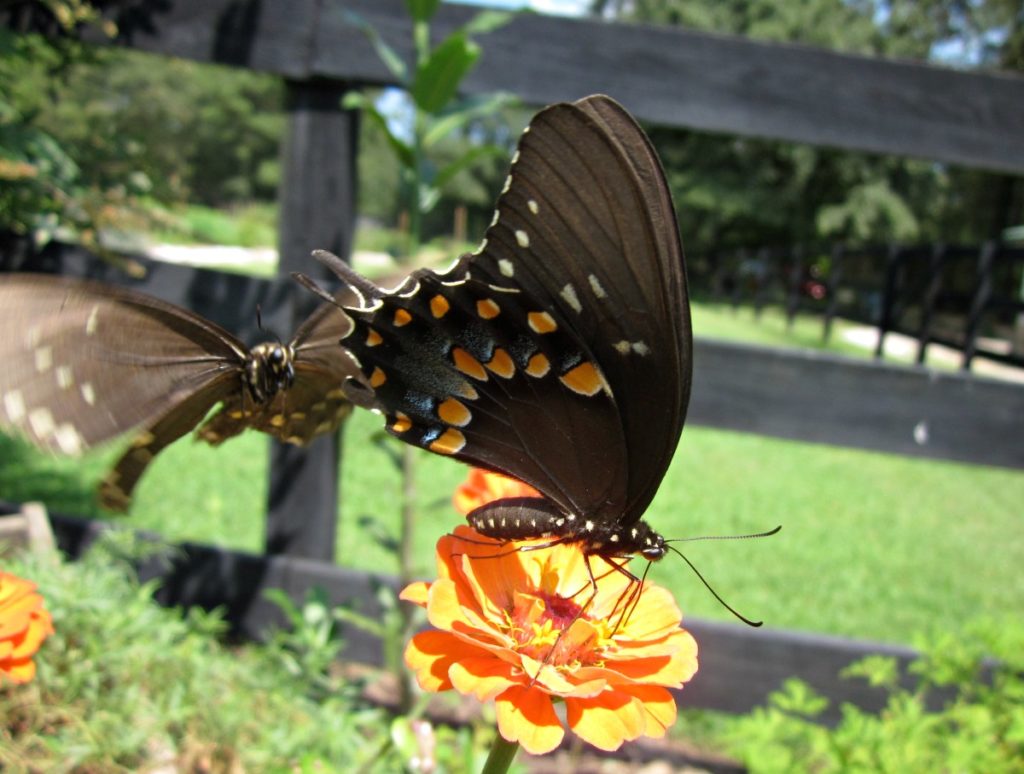I’ve given many presentations about butterflies to both children and adults, always allowing time in the end for questions. Once, a young girl surprised me by asking, “How do butterflies get pregnant?”
It’s complicated.

When female butterflies first emerge, they already have about 400-700 eggs inside their abdomen. Most butterflies have a very short adult lifespan of three to four weeks. Females must quickly find a mate to have enough time to lay all their eggs.

Depending on the species, but usually, within three or four days, the female will be ready for romance. But the female butterfly is picky. She wants just the right male who will provide just the right quality offspring.

The male, in order to entice the female butterfly, will perform a courtship dance. These “dances” consist of flight patterns that are peculiar to that species of butterfly. If the female is interested she may join the male’s dance. The two flutter and twirl through the air together. The male releases pheromones, a natural cologne, from scent glands in an effort to entice the female to mate.

Once the female is satisfied with her suitor, she allows him to attach himself by extending and offering her abdomen towards the male for coupling. The male butterfly has a pair of claspers at the end of his abdomen used to hold onto the female during the mating process. Males and females lock together at the ends of the abdomens and may stay attached for anywhere from an hour to up to twelve hours or more. In this way, males ensure that they are the only ones who fertilize the female’s’ eggs. During mating, males provide a spermatophore, a sort of “package” of sperm and nutrients the female needs to produce and lay eggs.
There are some species, such as the topical Heliconius butterflies, where the mating ritual is not so romantic. As a female Tiger Longwing (Heliconius hecale) gets ready to emerge from her chrysalis, several males maneuver around her, each one trying to get an advantage over the others by pushing each other aside. Whoever wins this contest mates with the female. But because the male is so anxious to copulate he will not wait until the female emerges from the chrysalis. This behavior is sometimes called “pupal rape” since the female is still inside the chrysalis and unable to escape. A rather more politically correct description would be “forced copulation” or simply “pupal mating.”
Just as with humans, the mating rituals of butterflies can be perplexing. I have seen some unusual behavior among butterflies inside butterfly exhibits. One day I walked inside the butterfly house to find several male Zebra Longwing butterflies flying wildly around a newly emerged female Black Swallowtail. I suppose the males were confused and misread the olfactory clues that they use to find females.
The next time you see a butterfly you will know that “love is in the air,” quite literally!
